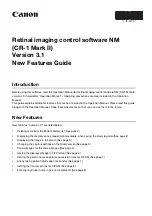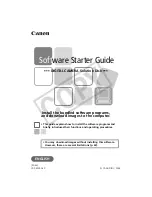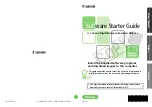
302
Novell eDirectory 8.8 Administration Guide
no
vd
ocx (
E
NU)
01
F
ebr
ua
ry
200
6
You cannot assign values to Time and Netaddress types in the Declaration section. If these types do
not already have a value, they receive their values in the Selector or Provider sections. Only single
types are initialized in the Declaration section.
Names/Optional Value Pairs
Variable names are combinations of alphanumeric characters in a string of any length. Because only
the first 31 characters are used, a variable must begin with a unique 31-character string. A variable
name must start with an alphabetic character, or the symbol is interpreted as a numeric constant.
Variable names are case sensitive. For example, the variable
R1
is not the same as the variable
r1
.
The underscore character (_) is allowed in variable names.
Values in a declaration must be constants rather than variables or expressions. Thus, the declaration
LOCAL INT L2:= L3;
is not allowed. A value initializing a variable in the Declaration section
can be changed in the Selector and Provider sections of the policy.
11.3.2 Selector Section
The Selector section of a policy begins with the keyword SELECTOR and concludes with the
keyword END. Selector sections are evaluated to determine which loaded policy will be used.
The Selector sections of all the currently loaded policies are run to determine which policy has the
greatest weight. When evaluated, the section returns a weight between 0-100, where 0 means do not
use this policy, 1-99 means use this policy if no other policy returns a higher value, and 100 means
use this policy.
The result of a Selector section is given in a RETURN declaration. If no RETURN declaration is
made, a default value of 0 is returned. The following is a sample Selector section:
SELECTOR
RETURN 49;
END
When the Selector sections of multiple policies are evaluated, more than one policy might return the
same value. In this case, it is indeterminate which policy will be selected. All else being equal, a
server policy overrides a WAN policy.
For more information on writing declarations, see
“Construction Used within Policy Sections” on
page 303
. See also
“Provider Section” on page 302
.
11.3.3 Provider Section
The Provider section begins with the keyword PROVIDER and concludes with the keyword END.
The body of the Provider section consists of a list of declarations.
The result of this Declarations list is a value representing the policy's suggestion to SEND or
DONT_SEND.
The result of a Provider section is given in a RETURN declaration. If no RETURN declaration is
made, a default value of SEND is returned.
The following is a sample Provider section:
Summary of Contents for EDIRECTORY 8.8 - GUIDE
Page 4: ...novdocx ENU 01 February 2006...
Page 16: ...16 Novell eDirectory 8 8 Administration Guide novdocx ENU 01 February 2006...
Page 68: ...68 Novell eDirectory 8 8 Administration Guide novdocx ENU 01 February 2006...
Page 90: ...90 Novell eDirectory 8 8 Administration Guide novdocx ENU 01 February 2006...
Page 116: ...116 Novell eDirectory 8 8 Administration Guide novdocx ENU 01 February 2006...
Page 128: ...128 Novell eDirectory 8 8 Administration Guide novdocx ENU 01 February 2006...
Page 184: ...184 Novell eDirectory 8 8 Administration Guide novdocx ENU 01 February 2006...
Page 249: ...250 Novell eDirectory 8 8 Administration Guide novdocx ENU 01 February 2006...
Page 307: ...308 Novell eDirectory 8 8 Administration Guide novdocx ENU 01 February 2006...
Page 333: ...334 Novell eDirectory 8 8 Administration Guide novdocx ENU 01 February 2006...
Page 371: ...372 Novell eDirectory 8 8 Administration Guide novdocx ENU 01 February 2006...
Page 439: ...440 Novell eDirectory 8 8 Administration Guide novdocx ENU 01 February 2006...
Page 519: ...520 Novell eDirectory 8 8 Administration Guide novdocx ENU 01 February 2006...
Page 529: ...530 Novell eDirectory 8 8 Administration Guide novdocx ENU 01 February 2006...
Page 555: ...556 Novell eDirectory 8 8 Administration Guide novdocx ENU 01 February 2006...
















































